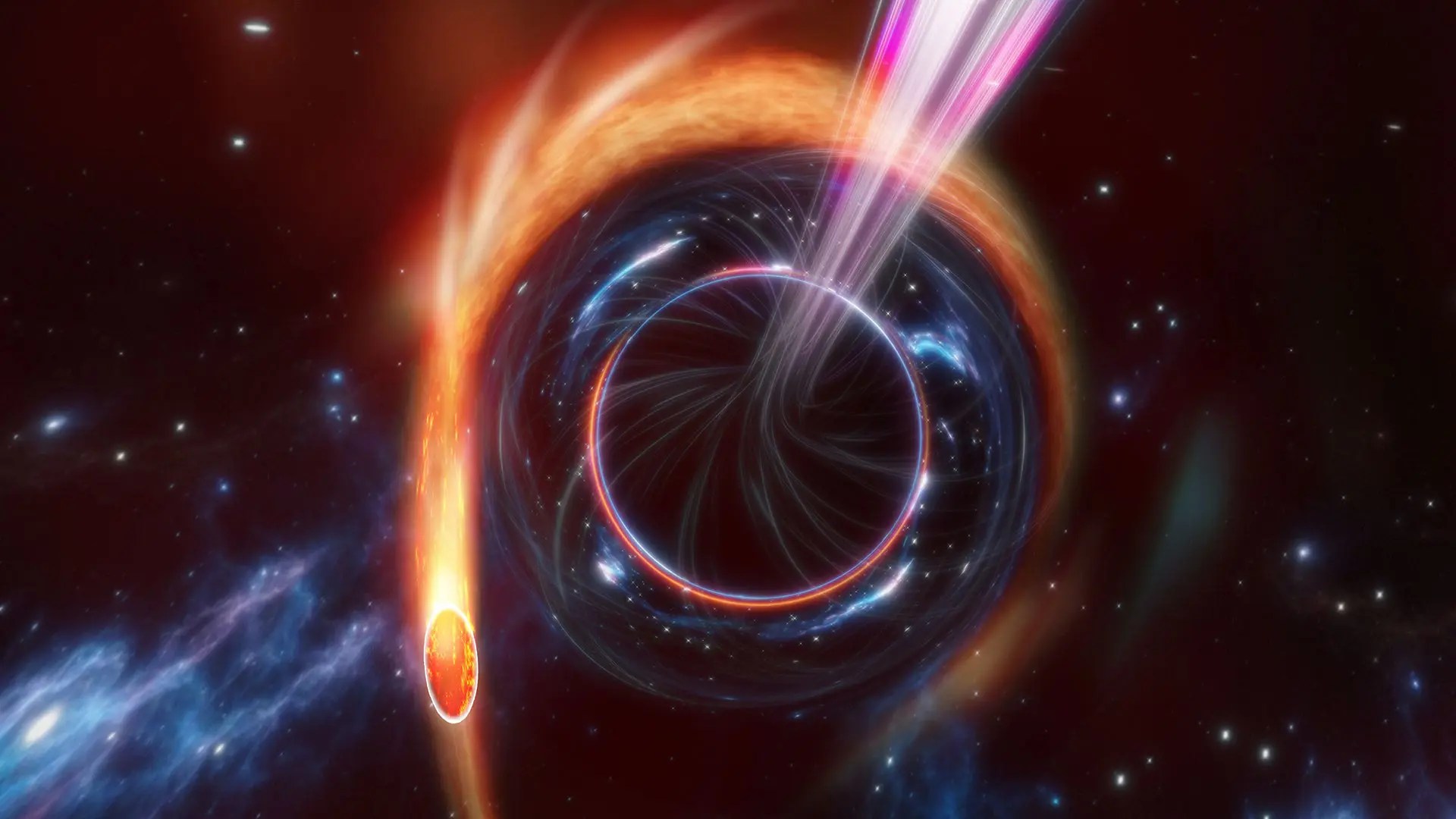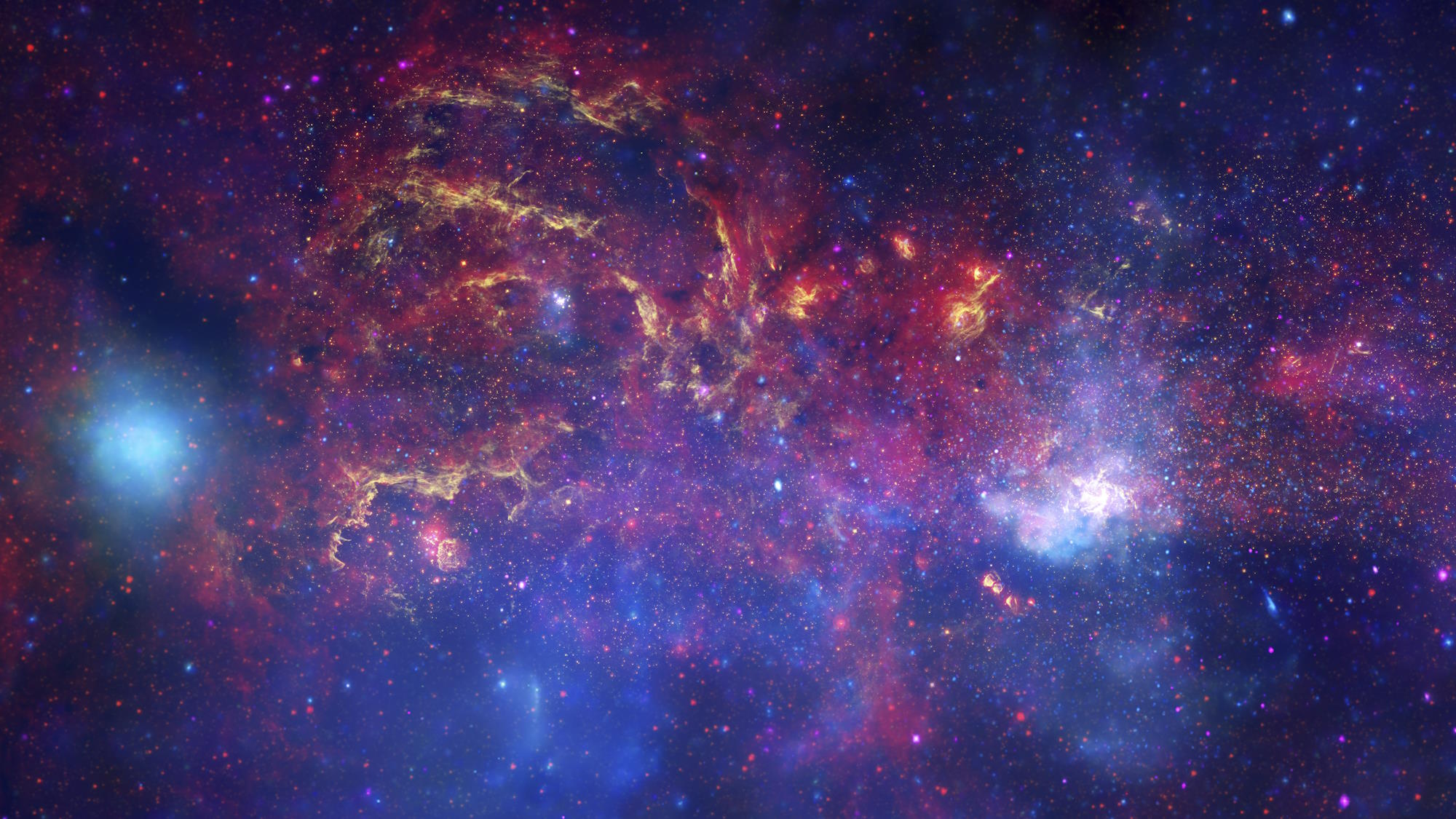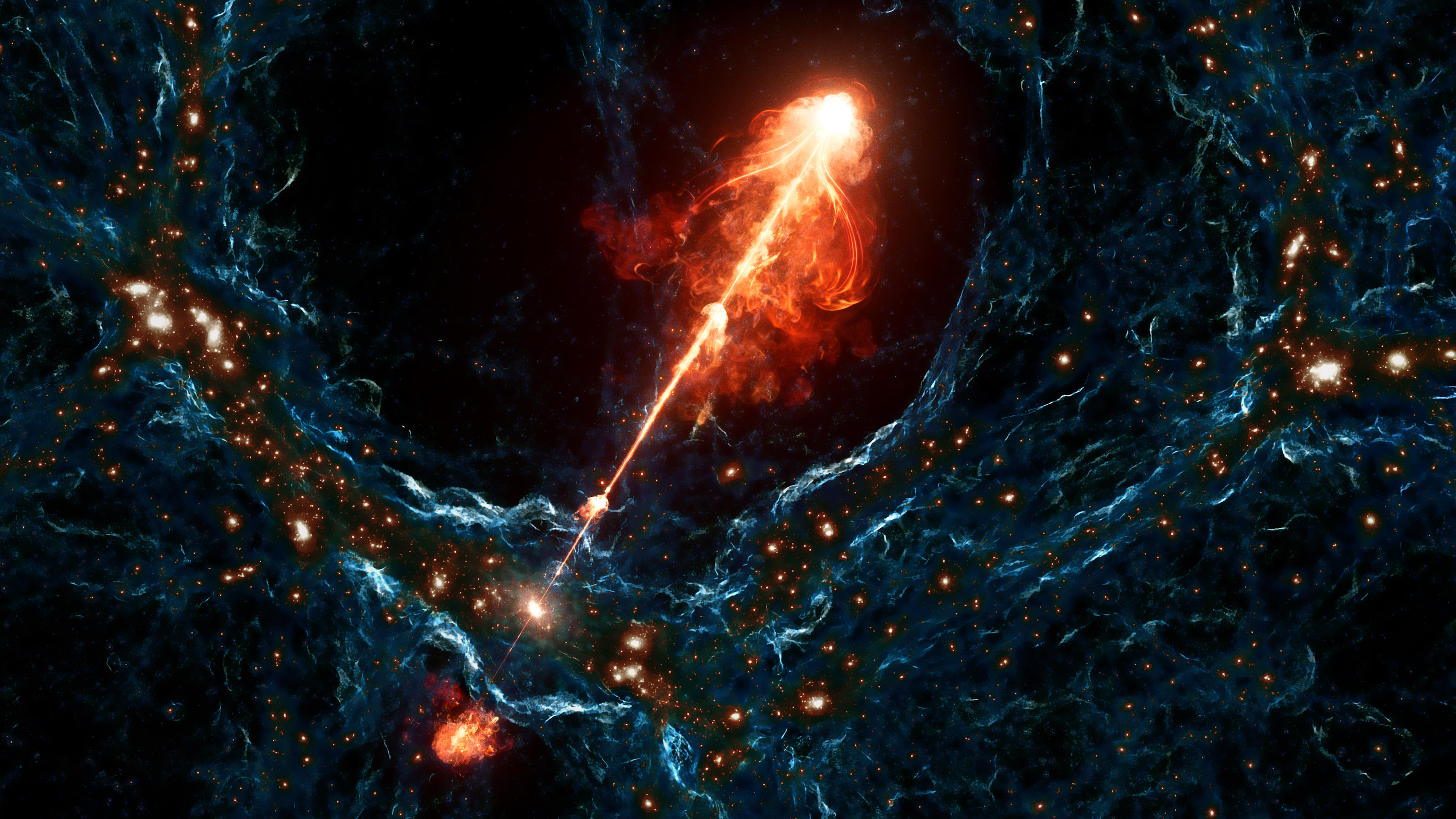NASA’s planet-finding TESS satellite captured groundbreaking images of a black hole pulling apart a star.
TESS, which stands for Transiting Exoplanet Survey Satellite, was able to observe what’s called a tidal disruption event, during which a passing star (in this case the size of our sun) got too close to a black hole and was shredded into a stream of gas. What happens next in such events is that the tail of the stream escapes into space while the rest forms an accretion disk.
Tidal disruptions are very rare, happening at the rate of once every 10,000 to 100,000 years in a Milky-Way-sized galaxy. Since seeing one is extremely difficult, only about 40 such events have been observed so far by scientists in various galaxies.
Astronomers estimate that the supermassive black hole that produced this particular event (thanks to its extreme gravitational pull) weighs about 6 million times more than our Sun. It’s located at the center of the 2MASX J07001137-6602251 galaxy, which is about 375 million light-years away from us in the constellation Volans.
NASA’s Neil Gehrels Swift Observatory and instruments from around the world provided more details about the finding, which was first captured on January 29th by ASAS-SN, an international network of 20 robotic telescopes. The network’s name, if you’re wondering, doesn’t stand for “assassin,” but is actually an acronym for the “All-Sky Automated Survey for Supernovae”. TESS actually saw the event even earlier, on January 21st, but its data was not transmitted to Earth until March 13th.
Thomas Holoien, a Carnegie Fellow at the Carnegie Observatories in Pasadena, California, said that data from TESS allowed scientists to see exactly when the event, dubbed ASASSN-19bt, began to get brighter – something they’ve never been able to spot previously.
“Because we identified the tidal disruption quickly with the ground-based All-Sky Automated Survey for Supernovae (ASAS-SN), we were able to trigger multiwavelength follow-up observations in the first few days,” said Holoien. “The early data will be incredibly helpful for modeling the physics of these outbursts.”
Learn more about TESS, a mission led by MIT and managed by NASA’s Goddard Space Flight Center here.
You can also read the paper on the amazing findings online in The Astrophysical Journal.
How to make a black hole
None





